Mac developers are currently in the midst of a major hardware architecture transition. But for some app makers, this is the third time that they have done this.
After years of rumors, Apple announced the transition to first-party Apple Silicon chips in 2020. Then the first Macs with a proprietary M1 processor launched in November — and apps started taking advantage of the new speed.
Although the transition is expected to take two years in total, Apple offered a system and devices to make the process easier on both consumers and developers. Existing apps that work with macOS Big Sur can — at least in theory — simply run as normal on M1.
But developers can also rebuild their software to make them native M1 apps. Even before anyone could buy an Apple Silicon Mac to try out, Apple issued a Developer Transition Kit and made app recompiling straightforward in the latest release of Xcode.
For many macOS app developers, this may be the first change in processor technology that they've experienced. Other developers have been down this road in the past, though.
And for a select number of developers, this road has actually been travelled three times before.
A familiar transition
Back in 1992, the Mac was eight years old and still running on versions of the original Motorola 68000 processor. Though Apple had internally started the shift to PowerPC the year before, it would take until 1994 for the new Macs to come out.
It was a successful move in terms of just how smoothly it had been handled for customers, developers, and Apple itself. However, this transition to PowerPC instead of Intel was ultimately deemed a mistake by then-CEO John Sculley. In his view, Apple ultimately wasn't able to compete on price against Intel-equipped PCs made by other manufacturers.
Once that hardware transition was done, and after a couple of acquisitions including Steve Jobs' NeXT, Apple was soon moving to replace the old MacOS 9 with the radically different OS X. Again, Apple managed the transition for users by making it possible to keep running older apps.
What those users, and perhaps most app developers, did not know then was that when Apple brought out OS X, it was already looking to move to Intel processors. Every version of OS X was simultaneously made for both PowerPC and Intel.
Even so, the actual transition to Intel x86 architecture wasn't unveiled until Jobs made the announcement in 2005.
Apple would ultimately ditch PowerPC in 2006 and, over a decade on, that transition is practically forgotten. One reason is that Apple did then exactly what it's promising to do now by easing the route for developers.
However, another reason comes down to those developers. They didn't just transition their apps, they made apps that leveraged the new processors or the new operating system.
They made us want to buy the new Macs. That's the same now with Apple Silicon M1 as it was back with PowerPC.
What's startlingly different, though, is just how few apps and developers have managed to keep up with all of Apple's hardware and software transitions. With that in mind, here are the key apps that survived each change and currently support Apple's M1 chip.
Bare Bones BBEdit
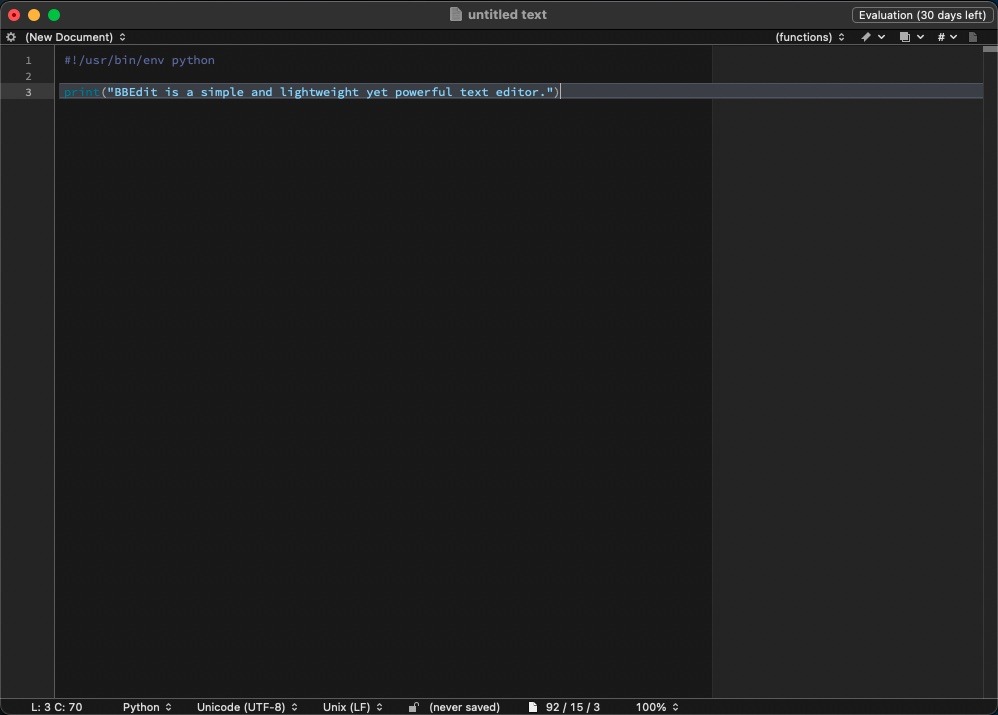
Mac developer Rich Siegel first announced the release of text editor BBEdit in April 1992. Although it was freeware during its initial release, it was eventually commercialized in 1993. Over the years, BBEdit support for many new Apple technologies, very shortly after release. That includes some that didn't last, such as OpenDoc.
It's a simple utility designed for software development, writers, website designers, and others that work with text. It can handle a range of tasks, including editing, searching and manipulating text. Some of its special features include syntax coloring for multiple coding languages and macOS scripting support.
As of 2020, BBEdit is currently available for Apple Silicon devices and is still a popular text editor.
It's available to use for free with a basic set of features from either the Bare Bones website or the Mac App Store. Users who want to access the full suite of features can buy it for a one-time fee on the website, or on a subscription basis from the Mac App Store.
Panic - Transmit
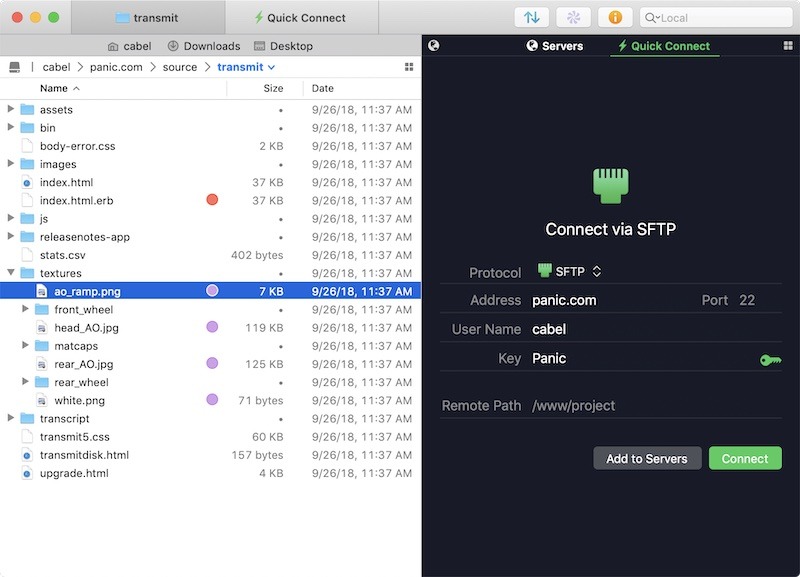
Panic Transmit allows for a range of server syncing and transfer features.
File transfer app Panic Transmit has also been around for years. As noted in a tweet, the software has supported 68K, PowerPC, Intel, and Apple Silicon during its run. It's easy to use, has a good set of features, and sports a streamlined UI.
Panic Transmit supports a range of cloud services, including Box and Google Drive. For users with more complicated server workflows, it also handles FTP, SFTP, WebDAV, and S3.
It allows users to easily upload, download, and manage files on servers. There are also advanced syncing features, a key generation and management tool, and a batch rename utility.
Transmit 5 is currently available from the Mac App Store or Panic's website. From the former, it's available for $24.99 a year. Users can also buy a perpetual license for $45 from the site.
Lemke Software - GraphicConverter
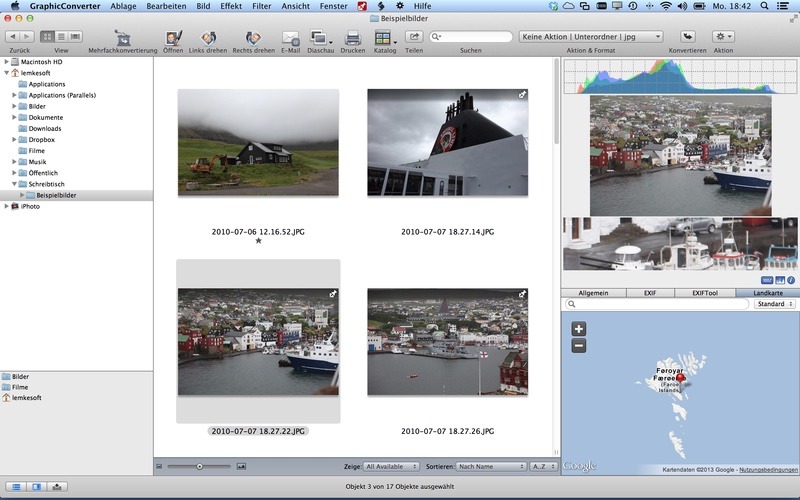
GraphicConverter isn't flashy, but it packs a full set of image management and editing features.
GraphicConverter, an image editing program, has also been around since the 68K days. Developer Lemke Software says that GraphicConverter has more than 1.5 million users across the globe.
A full-fledged utility for managing graphic file, GraphicConverter supports the import of about 200 formats and the export of about 80. That includes everything from PDF and PNG to PSD, RAW, or PTG. If there's a graphic file you need to convert, it can probable handle it.
Users can also expect the ability to directly import from a camera, an organizational suite aimed at managing and displaying graphic files, and a set of image editing features. The editing features include effects, color management, and geodata functions.
The versatile image app can be purchased for a one-time fee of $39.95 from the Lemke Software website.
StuffIt Expander
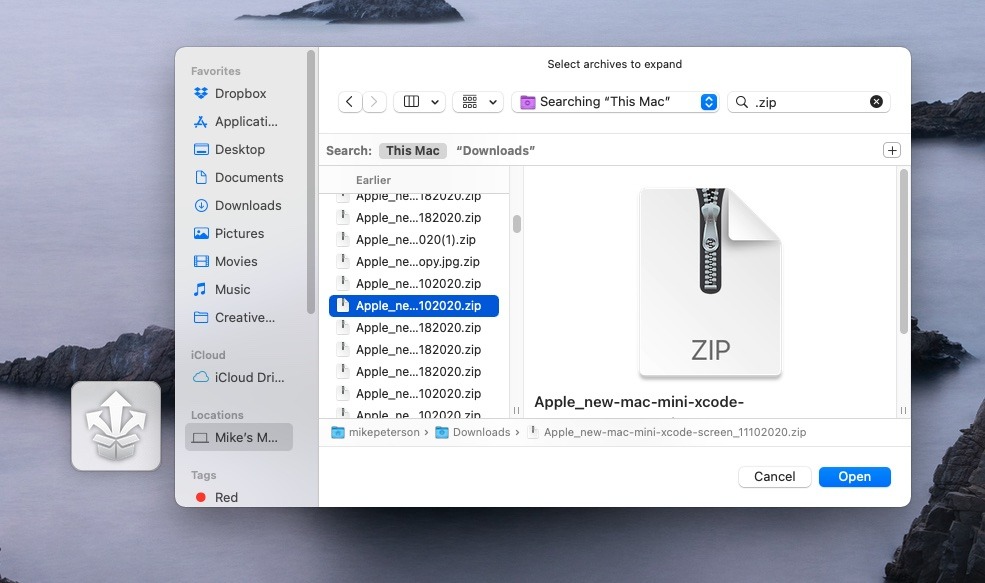
StuffIt's UI is as simple as it gets — in the best way possible.
StuffIt is also one of the oldest Mac apps still available as of 2020. Originally developed in 1987, the app offers various tools and utilities for archiving, compressing, and expanding files.
The Mac operating system comes with an Archive tool, but it doesn't support every compressed file format out there. StuffIt, on the other hand, can decompress RAR, TAR, GZIP, BZIP, 7zip, MIME, BinHex, and more. Users can handle files created with WinZip, SimplyRAR, and a range of other compression software.
Although it was produced solely for the 68K Macintosh lineup at the time, StuffIt versions for Windows, Linux, and Sun Solaris were eventually released.
Microsoft Word and Excel

Microsoft Word on Apple Silicon M1
The received wisdom is that Excel was invented on the Mac, but in truth Microsoft's plan for world domination in spreadsheets began earlier than that. Microsoft brought out Multiplan in 1982, but Excel itself did arrive on the Mac first.
Similarly, Word had its predecessors before the Mac version, and its text-based DOS version actually supported a mouse. The Mac had been on sale for a year before Microsoft Word 1.0 was released for it in January 1985, but Word has been on the platform ever since.
It wasn't always the most harmonious relationship between Word and the Mac, or even between Word and its users. When Apple transitioned from Motorola to PowerPC, Word for Windows had been such a success that Microsoft tried to simply port that over to the new processor.
That Word 6 for Mac was not a hit, but it wasn't because of Microsoft's failing to keep up with the PowerPC move. It was entirely a design decision, and subsequent versions for PowerPC were effectively developed specifically for the Mac.
Then when it came time to move to OS X, Microsoft went for it with 2001's release of Word X for Mac. It didn't add many features, but it required OS X to run and Word was such a force in business that this surely helped establish the new operating system.
Microsoft wasn't as quick with the move to the Intel processor, which is perhaps odd given the company's close ties to that chip maker. While Apple began the transition in 2006, Microsoft didn't release an Intel-native edition until Word 2008, in January 2008.
Similarly, Excel became a native PowerPC app only in 1993 with its version 5.0. And it became an Intel-native app when released as part of Office 2008 alongside Word.
Today, all of what is now sold as Office 365 is on its way to being Apple Silicon M1-native.
Adobe Photoshop and Illustrator
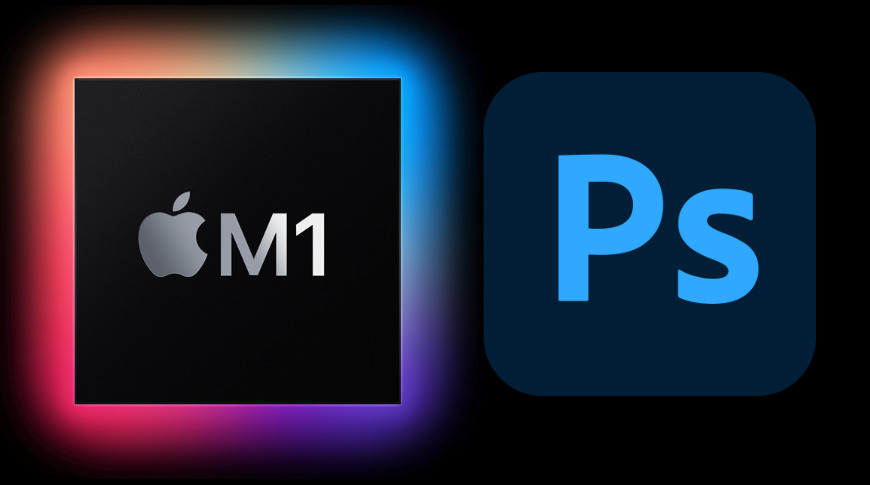
All Adobe apps are coming to Apple Silicon M1
Of all the developers who have stuck with Apple through its hardware and software transitions, maybe none owe that company as much as Adobe does. In turn, Apple owes a huge amount right back at Adobe.
Together, Adobe and Apple created the desktop publishing market. If you had to bet which firm would make its major creative apps keep up with Apple's moves, you would put your cash on Adobe.
You just might occasionally wonder whether that was a good idea. Adobe didn't exactly rush to make Intel-native versions of Photoshop and Illustrator, but it did get their in the end. And now it was one of the very first to bring out any Apple Silicon M1 apps, in the form of Lightroom.
Photoshop and Illustrator are both coming though, and are both in at least some stage of public beta release already.
Speaking in 2019, Adobe co-founder Chuck Geschke said "we have never, ever abandoned Apple and we don't want to abandon them today."
More to come
There will be more long-standing apps that make the leap to running natively on Apple Silicon M1, but none that have announced the move yet.
You can be certain that FileMake Pro will make the move, though. As originally an Apple app, and today made by a wholly Apple-owned subsidiary, it's not a surprise that FileMaker Pro has made it through the moves from 68000 to PowerPC and Intel.
The company has confirmed full support for Big Sur, so the latest FileMaker Pro will certainly run on M1, but there's not been any word on a native release.
App staying power
Developers who move their apps on through multiple hardware and significant software transitions must clearly have skill. But they must equally clearly have sales.
None of them would invest the time and effort if they didn't believe that it would be repaid by customers buying their apps. Any developer might personally be excited by a transition and all the technological advances it can bring, but to survive in business, you have to earn some cash.
It's a gamble that not all developers were always willing to make. And it was a gamble that not all of them were able to afford to make, either.
Today it looks clear that Apple Silicon is a giant advance that it's going to be a success. It was a lot less clear when the Intel processor was adopted, and it was practically murky when the PowerPC came along.
So we have lost major developers along the way, perhaps most often at transition times. If an app was just holding on, then being forced to invest in rebuilding or redesign it for a new platform was surely the last gasp for some.
However, the transitions equally surely helped boost each of those developers who did make the jump. They had to be producing apps that made a significant difference to their users, and then they had to have those apps benefit from the greater speed each transition bought.
The list of apps that have made it all the way from the 1980s Motorola 68000 to the 2020s Apple Silicon M1 may be shorter than you'd hope. But each of these apps, from tiny graphics utility to enormous Office suites, has become a crucial part of the Mac experience.
https://ift.tt/2MnBKd8
Tecnology
Bagikan Berita Ini














0 Response to "Some Mac software has made it all the way from 68K to M1 - here's why - AppleInsider"
Post a Comment